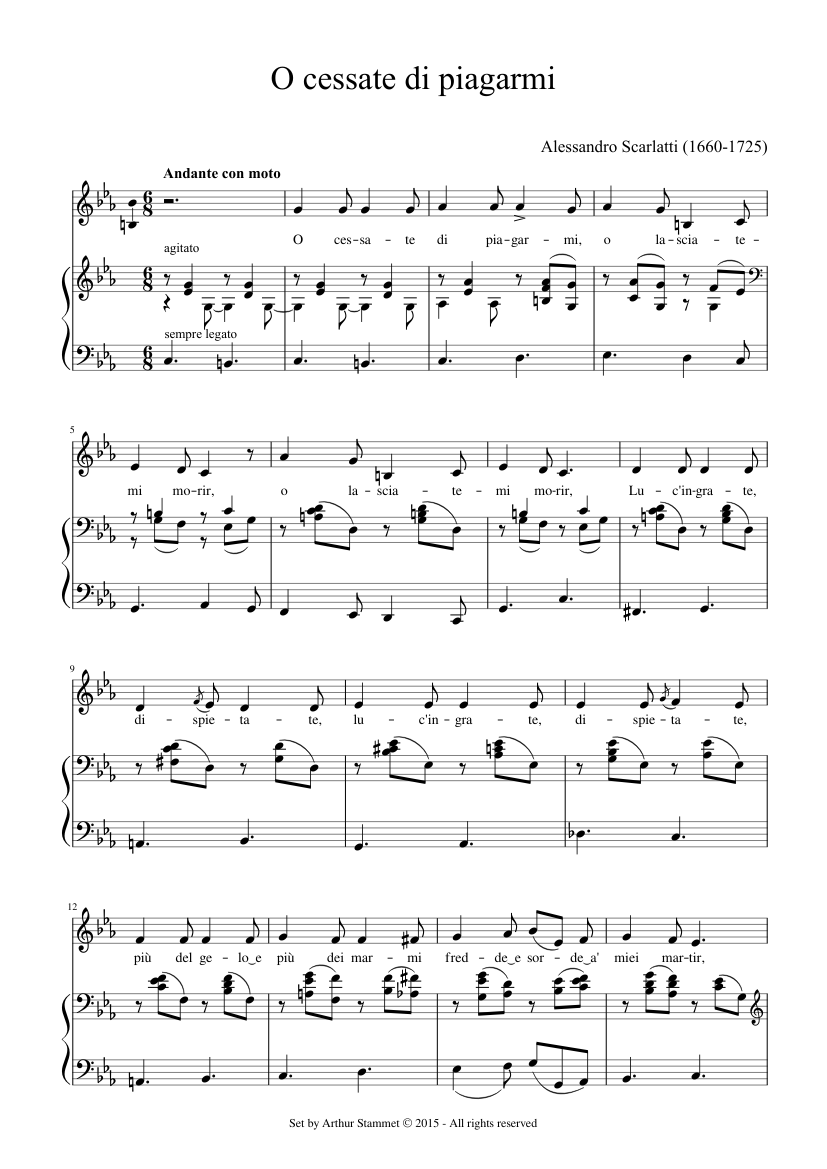
Scarlatti), O leggiadri occhi belli (anonymous), Intorno all'idol mio (Cesti), Delizie contente, che l'alma beate (Cavalli). This new edition, newly researched and engraved, includes the original Schirmer “24” plus four additional songs: Sento nel core (A. For the full article, click here.Most voice teachers and singers still prefer the pianistic, wonderfully gratifying arrangements of this early Italian material made by Alessandro Parisotti in the 1880s. His last work on a large scale appears to have been the unfinished serenata for the marriage of the prince of Stigliano in 1723. By this time Naples seems to have become tired of his music the Romans, however, appreciated it better, and it was at the Teatro Capranica in Rome that he produced some of his finest operas (Telemaco, 1718 Marco Attilio Regolò, 1719 La Griselda, 1721), as well as some noble specimens of church music, including a mass for chorus and orchestra, composed in honor of Saint Cecilia for Cardinal Acquaviva in 1721. In the interval he enjoyed the patronage of Ferdinando de' Medici, for whose private theatre near Florence he composed operas, and of Cardinal Ottoboni, who made him his maestro di cappella, and procured him a similar post at the Basilica di Santa Maria Maggiore in Rome in 1703.Īfter visiting Venice and Urbino in 1707, Scarlatti took up his duties in Naples again in 1708, and remained there until 1717.

In 1702 Scarlatti left Naples and did not return until the Spanish domination had been superseded by that of the Austrians. Here he produced a long series of operas, remarkable chiefly for their fluency and expressiveness, as well as other music for state occasions. In February 1684 he became maestro di cappella to the viceroy of Naples, through the influence of his sister, an opera singer, who was the mistress of an influential Neapolitan noble. The production at Rome of his opera Gli Equivoci nell sembiante (1679) gained him the protection of Queen Christina of Sweden (who at the time was living in Rome), and he became her maestro di cappella. He is generally said to have been a pupil of Giacomo Carissimi in Rome, and there is reason to suppose that he had some connection with northern Italy, since his early works show the influence of Stradella and Legrenzi. Scarlatti was born in Palermo, then part of the Kingdom of Sicily. He was the father of two other composers, Domenico and Pietro Filippo Scarlatti. He is considered the founder of the Neapolitan school of opera. Alessandro Scarlatti was an Italian Baroque composer especially famous for his operas and chamber cantatas.


 0 kommentar(er)
0 kommentar(er)
